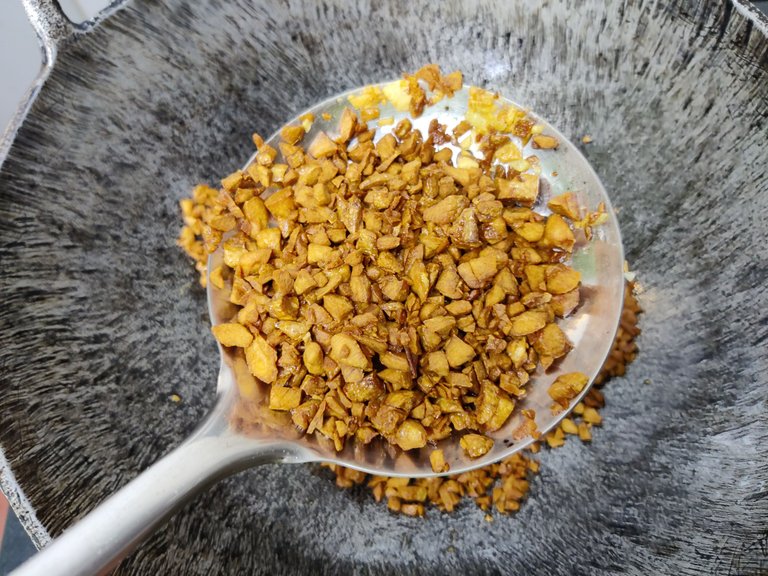

Things are getting more expensive in Suriname. And while we can still afford to buy the foodie things we usually buy, sometimes prices hit us so hard mentally that we go back to the drawing board and try to figure out if we can make that thing ourselves. I don't mind this at all, as I was already doing it with dishes that were already too expensive when ordering them at a restaurant. Things like pastas and steaks, but even a Caesar salad, which is somehow expensive on a menu, but very simple to make with relatively cheap ingredients. Making dishes myself has also taught me a lot about cooking. Things I wouldn't know otherwise like how to make an Alfredo pasta sauce from scratch with base ingredients, instead of just buying it in a pot.
Recently because of the increased prices, we've had to evaluate more and more what we would be doing ourselves and what was still reasonable to buy from someone else. Two of those things were fried garlic and fried onions, which serve as a garnish for my favorite dish here: Saoto, or Soto Ayam as the rest of the world may know it.
I know it's very common in Eastern countries to make fried garlic and fried onions at home, but here we are used to buying it. The reason is a combination of convenience and people just not being informed how easy it is to make it. The fact that Suriname has a lot of blended ethnicities also plays a role. Unsurprisingly, the Javanese people are the one ethnic group that still somewhat make these items and sell them to the rest of the population, mostly the older generation, or those living in rural areas.
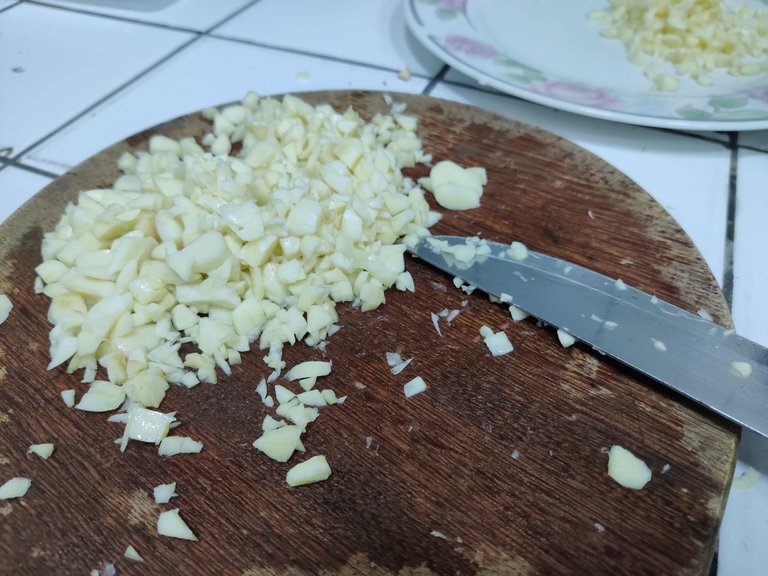
So while planning our trip to a private area in district Para to relax at the side of a refreshing creek, we decided to take care of the fried garlic, along with the fried potatoes. @tanjakolader made the fried potatoes at home ahead of time and has written all about that here:
First-time Frying Grated Potatoes For Saoto Soup || DIY Because Of Increased Prices 🥣
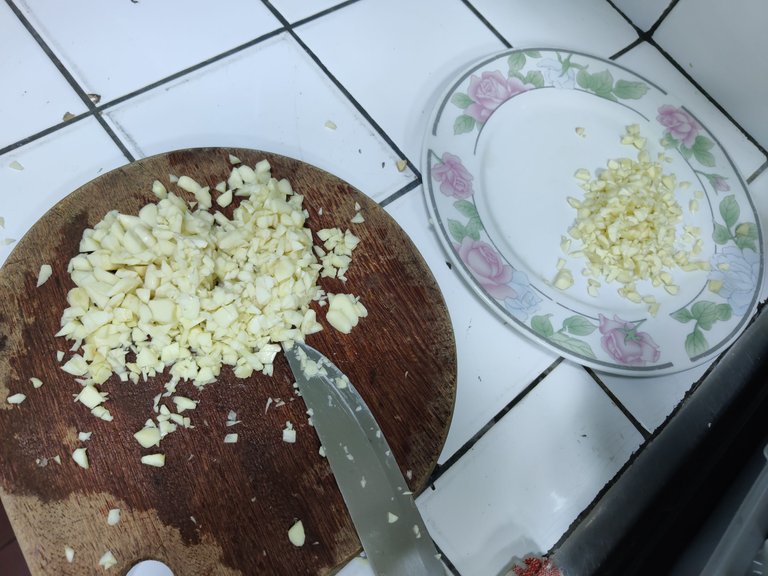
I was in charge of the garlic because that takes a bit more patience and Tanja doesn't have much of that to spare. Because it wasn't that time consuming as peeling and grating potatoes though, I made them at the place we were on vacation instead of at home. I had already made them once or twice at home, but this was the first time I did it for a slightly larger group of people.
I chopped the garlic up in medium chunks. Just enough so they fry and dry out completely, but not enough to get powder out of it.
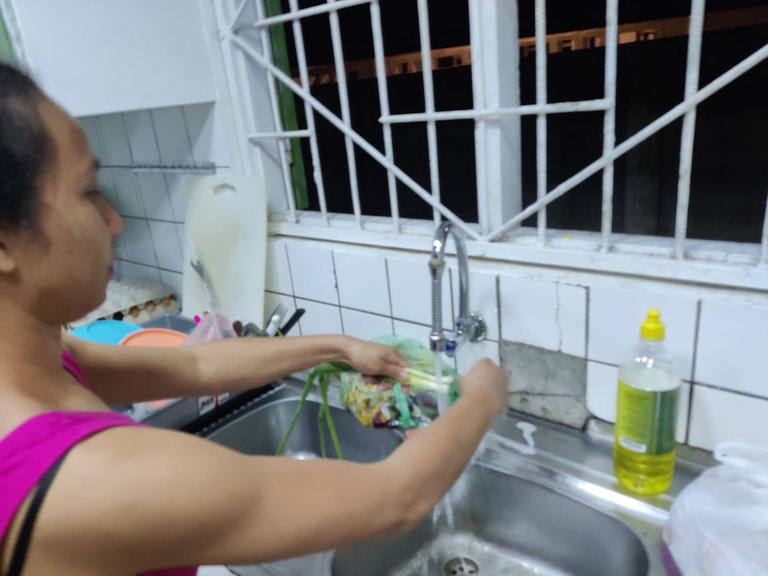
Tanja, who was busy with preparations for the Saoto, a soup with its roots in Indonesia, helped me out with peeling the garlic.
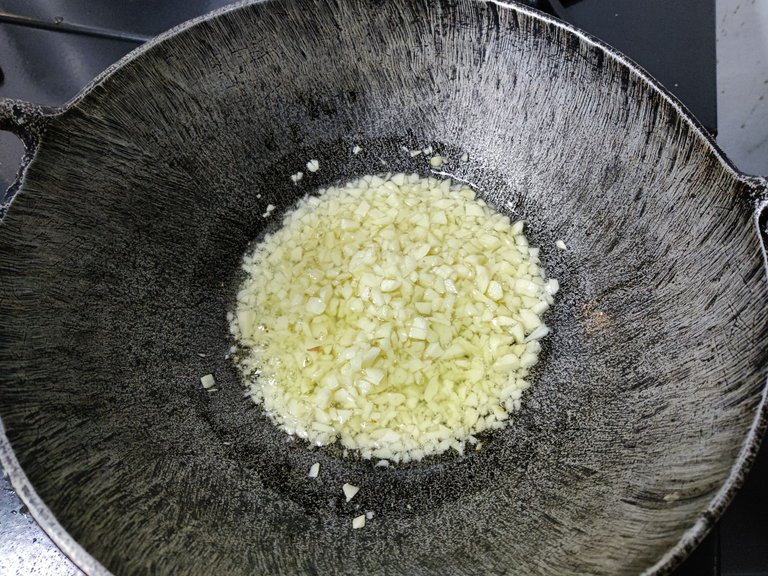
The frying itself is fairly easy, but as I said earlier requires some patience. The first thing you need to do is just put the garlic into a pan and fill with oil until the garlic is covered, no more oil than that.
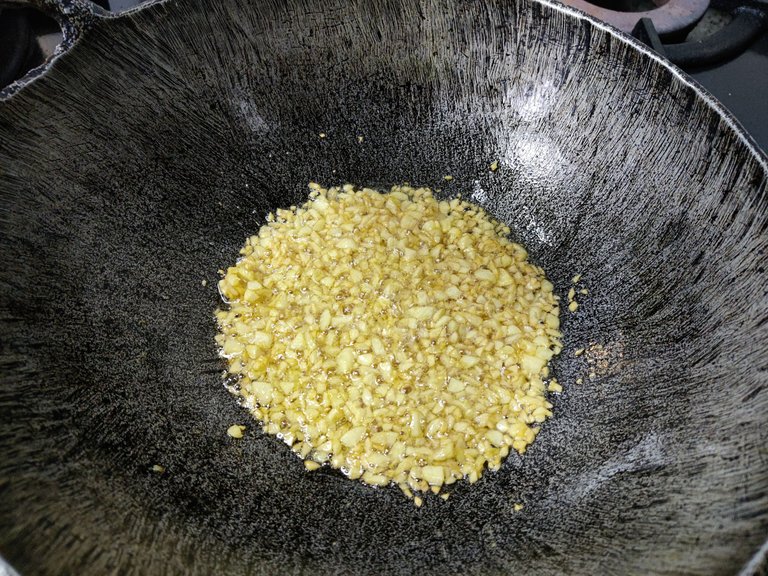
Then you can turn on the fire and set it to the lowest possible. And let the cold oil and garlic come to temperature as one. Slowly. If the heat is too high, you burn the garlic and it's game over and back to step 1. Not to mention that the charcoaled garlic would be very bitter.
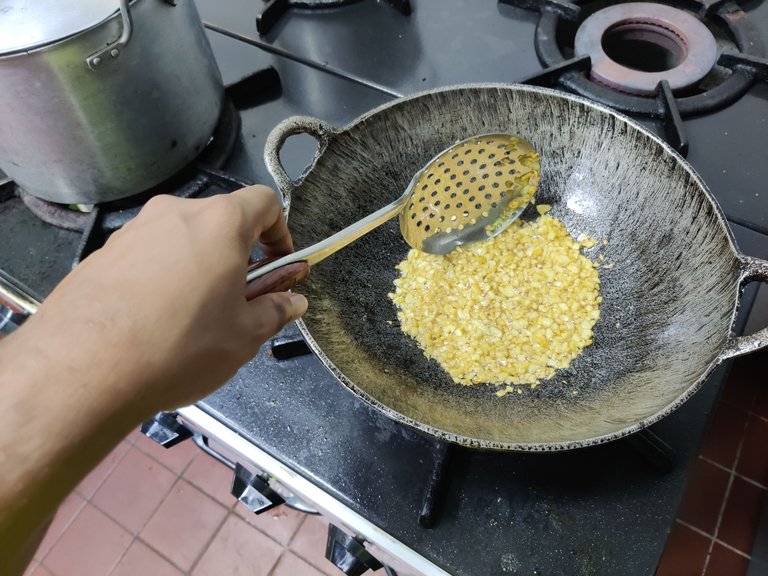
Once it's a bit heated, you will see small bubbles. Congratulations, your garlic is frying. All I do after this point is stir it every now and then to keep it from sticking and also so it fries evenly.
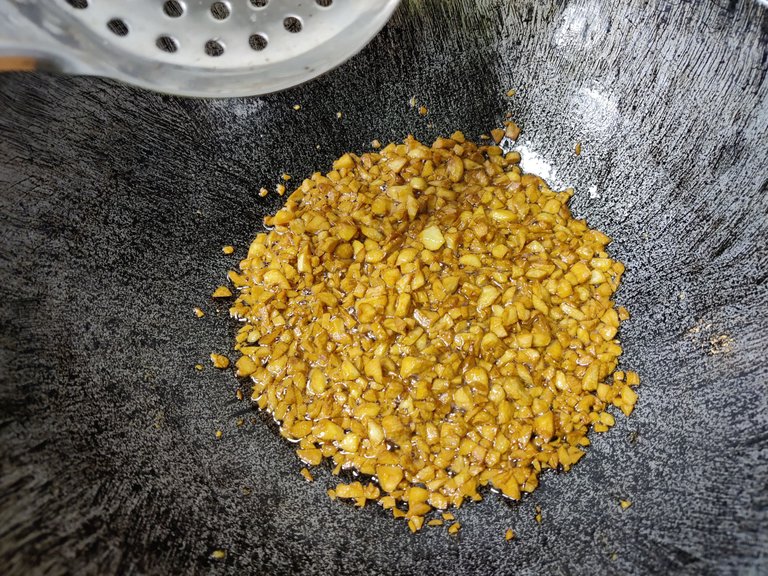 | 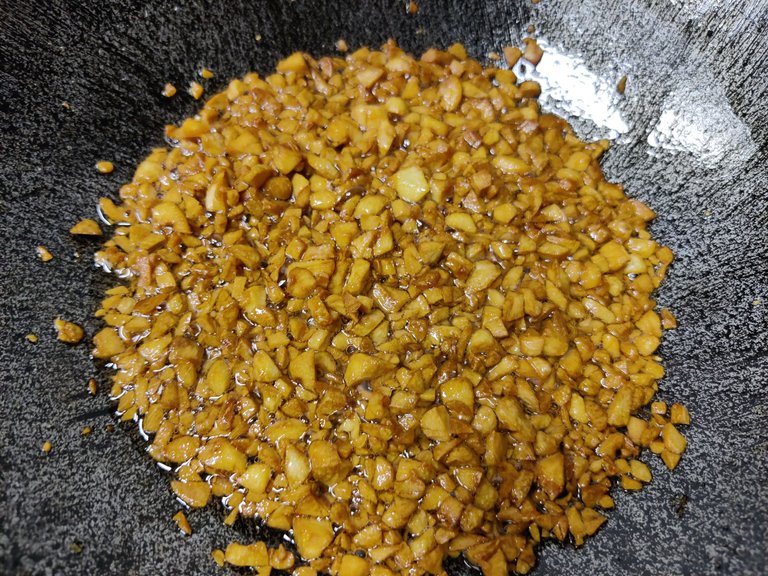 |
After a while of doing just that, stirring, staring and waiting, it slowly becomes more brown.
Once it gets that dark gold color it's ready to be taken out of the pan and put one a sheet of paper or in a metal strainer so it can dry and let go of the oil.
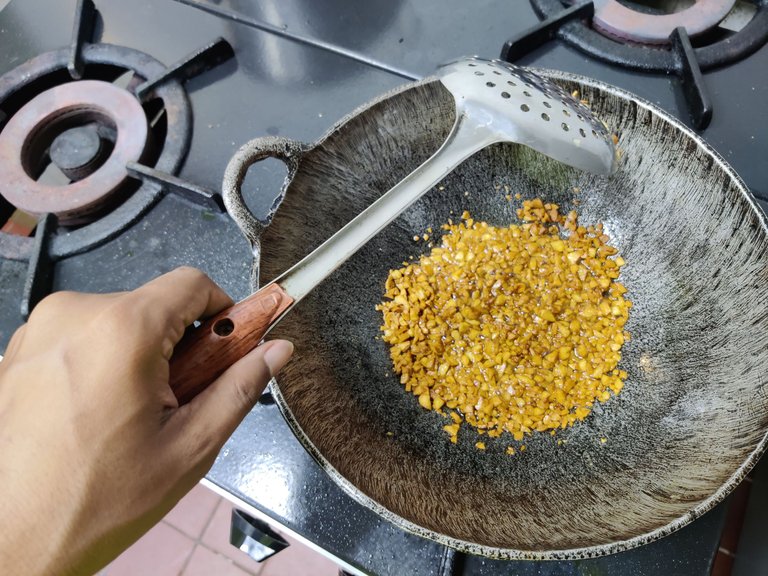
At this point I turn off the oil and start scooping. It's very important to stop at dark gold, because you need to take into account that even after you stop the fire the garlic still fries for a little bit of time after that.
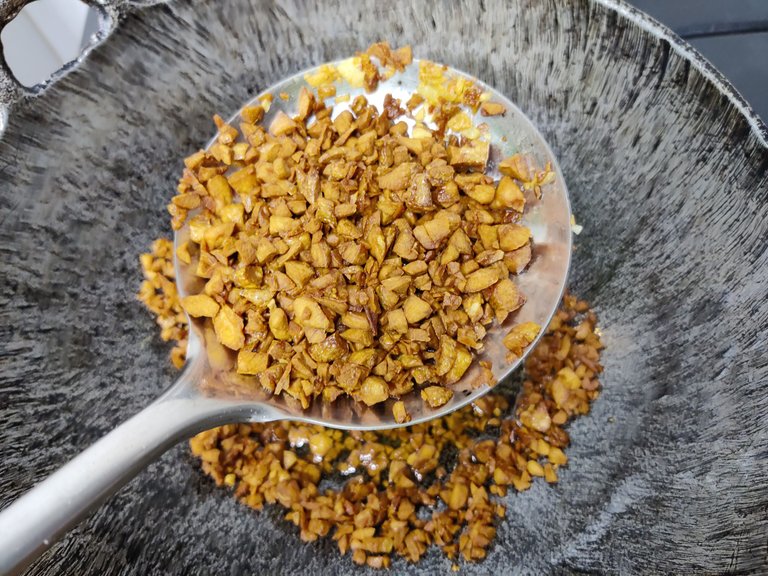
The satisfaction of seeing the golden color and how much I was saving on this particular food item was great. It even tasted better than what people sold at the market. Maybe because it was fresher, I'm not really sure.
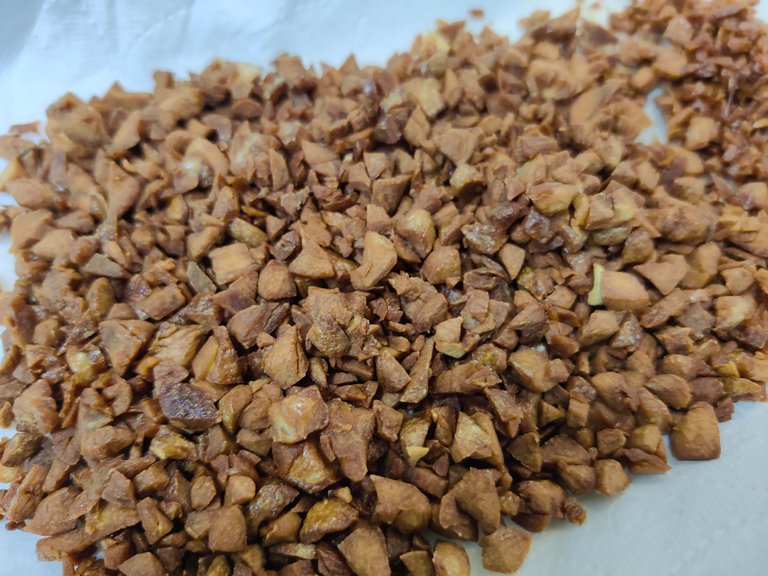
This was the result. And it was great in the soup. Even if the economy goes back to "normal", if ever, we will probably keep doing stuff like this ourselves, because we now know the how easy the steps are, and that it's definitely worth the effort.
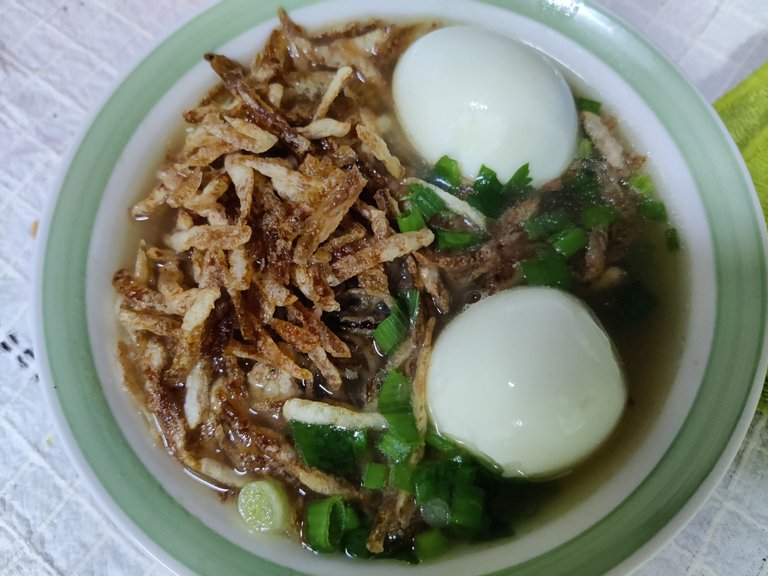

[ Uniquely Clever Sign Out Message Goes Here ]







